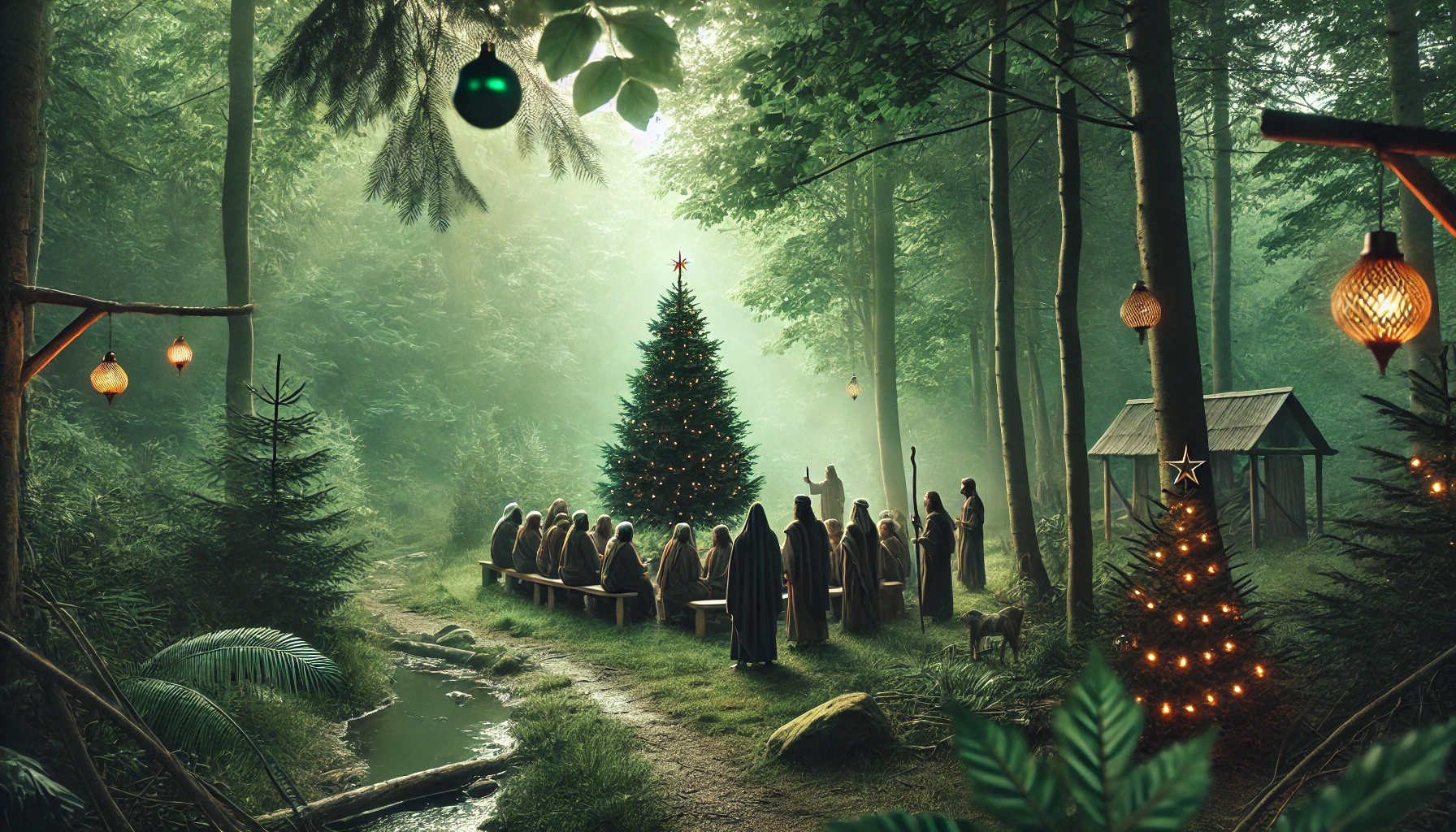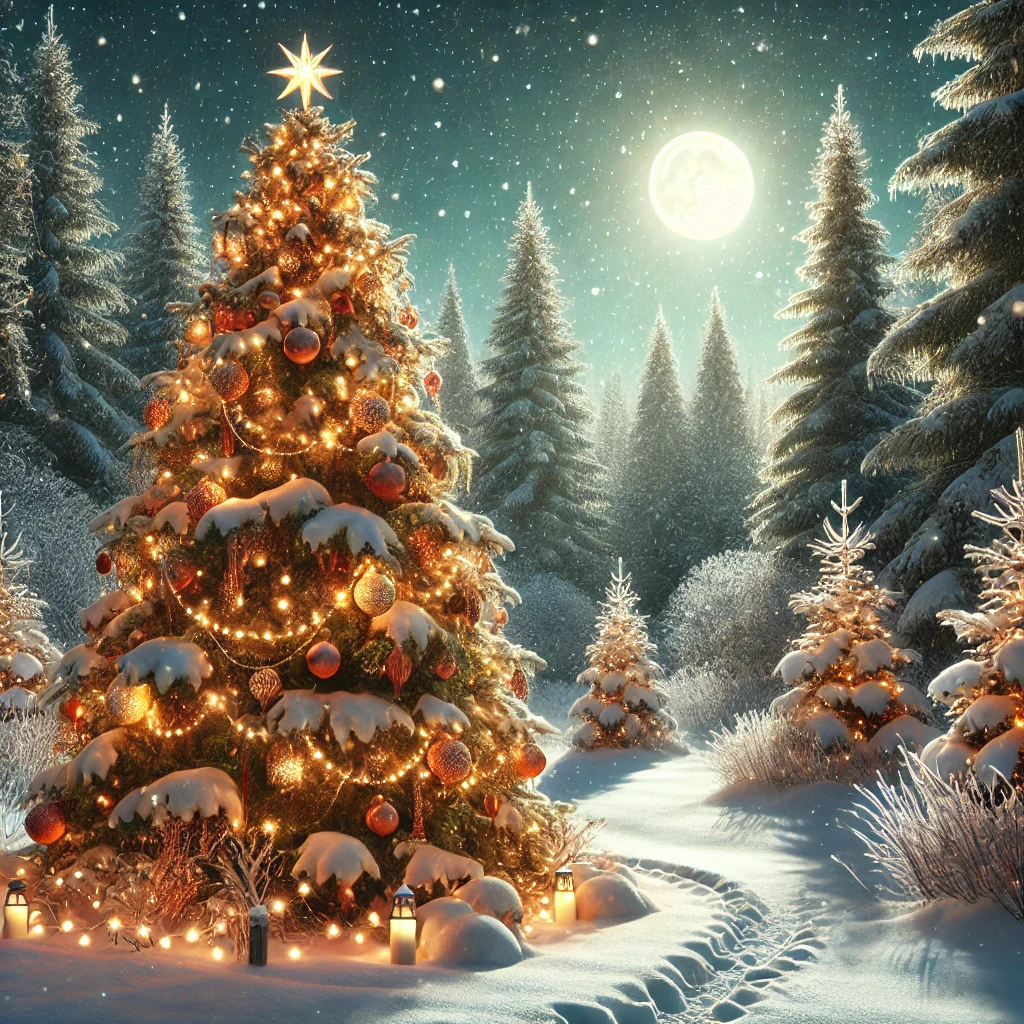
The tradition of Christmas trees, although not explicitly mentioned in the Bible, is intertwined with various symbols and practices found in the scriptures. Bible verses related to trees and nature help us understand the deeper meaning behind this tradition.
For instance, the evergreen trees symbolize eternal life, reflecting God’s everlasting love and the Holy Spirit. The use of branches of palm trees, boughs of leafy trees, and fruit of splendid trees in biblical contexts can be seen as precursors to the celebratory symbol of the Christmas tree. German immigrants popularized the decorated Christmas tree in the 19th century, a tradition that aligns with the Christian beliefs of celebrating the birth of Jesus Christ, the Wonderful Counselor, and Prince of Peace. The winter solstice, marking the darkest time of the year, is brightened by the good news of the birth of Jesus, the Light of the World.
By understanding these connections, we see that the Christmas tree is more than just a festive decoration; it is a symbol of hope, renewal, and the true meaning of Christmas. It is a testament to the Word of God and the enduring faith of the Christian community throughout the ages.
Isaiah 60:13
“The glory of Lebanon shall come to you, the cypress, the plane, and the pine, to beautify the place of my sanctuary; and I will glorify the place where my feet rest.” (NRSVue)
Reflection:
This verse highlights the use of beautiful and majestic trees, like the cypress and pine, to adorn sacred spaces. The glory of Lebanon’s trees represents not just physical beauty, but also the splendor and honor brought to places of worship. In the context of Christmas, the evergreen tree can be seen as a symbol of eternal life and enduring beauty, qualities that reflect the eternal nature of God and His creation. Decorating a Christmas tree can thus be seen as a way to honor the sacredness of the holiday season and celebrate the birth of Jesus Christ with beauty and reverence.
Luke 23:31
“For if they do this when the wood is green, what will happen when it is dry?” (NRSVue)
Reflection:
Jesus uses the metaphor of green and dry wood to illustrate the difference between times of prosperity and times of judgment. In relation to Christmas trees, the green wood can symbolize life and vitality, much like how evergreen trees remain vibrant throughout the winter. This enduring greenness can remind us of the hope and renewal brought by Jesus’s birth. Just as a green tree stands out in the barren winter, the birth of Christ brought light and life into a world waiting for redemption.
Isaiah 41:19
“I will put in the wilderness the cedar, the acacia, the myrtle, and the olive; I will set in the desert the cypress, the plane, and the pine together.” (NRSVue)
Reflection:
God promises to bring diverse and lush vegetation to the barren wilderness, symbolizing restoration and life. The inclusion of evergreen trees like the pine signifies resilience and enduring life, qualities celebrated during Christmas. By decorating a Christmas tree, we reflect on God’s promise of transformation and renewal, celebrating the birth of Jesus as a pivotal moment of hope and new beginnings for humanity.
Jeremiah 10:3-4
“For the customs of the peoples are false: a tree from the forest is cut down, and worked with an ax by the hands of an artisan; people deck it with silver and gold; they fasten it with hammer and nails so that it cannot move.” (NRSVue)
Reflection:
Jeremiah warns against the idolatrous practices of decorating trees, which were common among pagan cultures. This passage serves as a reminder to focus on the true meaning of Christmas rather than the materialistic aspects of the season. While the Christmas tree can be a beautiful symbol, it should not overshadow the celebration of Jesus’s birth and the spiritual significance of the holiday. The decorated tree can be a reminder to keep our focus on Christ and not be swayed by the customs of the world.

Jeremiah 3:13
“Only acknowledge your guilt, that you have rebelled against the Lord your God, and scattered your favors among strangers under every green tree, and have not obeyed my voice, says the Lord.” (NRSVue)
Reflection:
This verse addresses the Israelites’ disobedience and idolatry, often conducted under green trees. It serves as a cautionary tale about the misuse of nature in worship. In the context of Christmas, it reminds us to use the Christmas tree as a symbol of faith and celebration of Jesus’s birth, rather than an object of vanity or misplaced worship. By acknowledging our own shortcomings, we can seek to honor God through our holiday traditions.
Deuteronomy 16:21
“You shall not plant any tree as a sacred pole beside the altar that you make for the Lord your God.” (NRSVue)
Reflection:
This commandment forbids the planting of trees as sacred objects near altars, highlighting the importance of keeping worship pure and focused on God. For Christians, this can translate to ensuring that Christmas celebrations, including the use of trees, do not detract from the worship of Christ. The Christmas tree should complement our devotion and remind us of God’s creation, not replace or overshadow our worship of Him.
Deuteronomy 12:2-3
“You shall surely destroy all the places where the nations whom you shall dispossess served their gods, on the high mountains and on the hills and under every green tree. Break down their altars, smash their pillars, burn their sacred poles with fire, and hew down the idols of their gods, and thus blot out their name from their places.” (NRSVue)
Reflection:
These verses instruct the Israelites to destroy places of pagan worship, including those under green trees. This strong stance against idolatry emphasizes the importance of purity in worship. In relation to Christmas, it calls for reflection on how we use symbols like the Christmas tree. The tree should be a symbol of the birth of Jesus Christ and His significance in our lives, not an object of misplaced reverence or a distraction from true worship.
1 Kings 14:23
“For they also built for themselves high places, pillars, and sacred poles on every high hill and under every green tree.” (NRSVue)
Reflection:
This verse speaks of the Israelites’ practice of setting up altars and sacred poles under green trees, often for idol worship. For Christians, it serves as a reminder to ensure that our traditions and symbols, including the Christmas tree, remain focused on celebrating the true meaning of Christmas—the birth of Jesus Christ. The tree can be a beautiful part of our celebration, but it should always point back to Christ and His message of hope and salvation.

The symbolism of Christmas trees, while not explicitly mentioned in the Bible, draws from various scriptures that discuss trees, greenery, and idolatry.
By understanding these verses, we can align our traditions with our faith, focusing on the celebration of Jesus’s birth and the hope it brings. The evergreen tree symbolizes eternal life, reflecting the love of the true God, and the Holy Spirit. As the name Immanuel means “God with us,” the decorated Christmas tree in our homes symbolizes the presence of Christ Jesus during the Christmas season.
This tradition is a perfect gift representing the good news of Jesus’s birth in the City of David. However, we must be cautious not to let the customs of the heathen, such as the worship of false gods or the pagan practices of ancient cultures, overshadow the most important thing—the celebration of Christmas as the birth of the Son of God.
By keeping our focus on the Lord God and the holy days, we honor the true meaning of Christmas. This alignment with biblical principles ensures our traditions reflect the love of God and the true essence of this sacred time of year.
